The covering for a natural wood fence is chosen depending on the composition, which determines the duration of the fence's use. Before use, the boards are treated with substances that increase resistance to negative external factors. Wood fence paint forms a matte or glossy finish on the surface, protects against moisture and microorganisms.
- Disadvantages of wood
- The need for processing and painting wood
- Preparation for painting
- What to look for before painting
- How to remove old paint from a fence
- Wood fence paint options
- Water based paint
- Drying oil (oil)
- Alkyd coatings
- Coating the fence with varnish
- Antiseptic paints
- Compositions that are prepared independently
- Primer before painting
- Fence Painting Tools
- Roller
- Brush
- Spray gun
- Wooden fence painting process
- Features of painting an old fence
- How to paint a wooden fence correctly
- Features of applying varnish
- Oil impregnation of wood
Disadvantages of wood
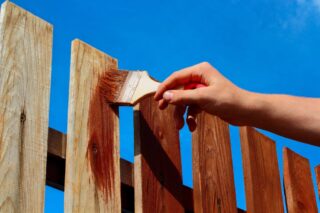
Wood in construction has advantages over other materials, but is not ideal in terms of properties.
Disadvantages of natural wood:
- the pores of the material absorb water, swell, warpage and cracks are observed;
- harmful microorganisms, fungi, mold develop on the surface;
- bugs destroy the thickness of the material, reduce strength;
- the tree ignites easily and burns for a long time.
When moisture is lost in a natural way, the products decrease in size, as a result, the structure changes, cracks appear, knots fall out.
The need for processing and painting wood
The picket fence is in the open air, therefore it is affected by precipitation, sun, wind and frost. In such conditions, the surface is treated with wood fence paint. The composition adheres firmly to the material due to the preliminary priming of the products.
There are rocks that absorb moisture less than others. These are coniferous trunks and deciduous trees with a high fiber density. Inside the building, such rocks can not be treated with antiseptics, substances that reduce the degree of absorption. In open street conditions of a summer cottage or a private house, any products made from natural materials are processed.
Preparation for painting
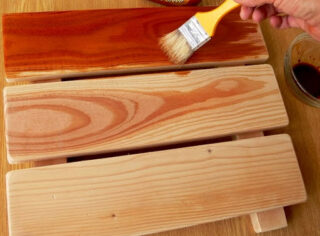
Before work, determine the breed in order to choose the method of processing. Some varieties contain substances that prevent quick drying or adhesion of paint to the surface of the product. For example, teak is treated with a solvent to reduce the amount of oil on the surface. Oak requires impregnation with pore-closing compounds.
What to look for before painting
The plane should have perfect flatness, which is obtained by grinding. Even factory-made products need polishing and surface improvement, as they are not yet ready for paint application. For work, take an emery with a fine grain (No. 120, 180, 200).
After grinding, remove dust, use a vacuum cleaner or a rag soaked in alcohol. Antiseptics, insecticides, fire retardants, water repellents are applied. It is better to process the fence boards before nailing in order to avoid gaps.
How to remove old paint from a fence
Old boards may have a layer of varnish or paint, which should be removed before work. Do not remove only if the old coating is held tight and does not peel off.
Removal methods:
- mechanical;
- chemical.
The first method means cleaning by hand using a spatula, knife or drill, grinder with a grinding wheel. The chemical method uses thinners, removers, which lift the paint. The detached plates are removed with a spatula.
Wood fence paint options
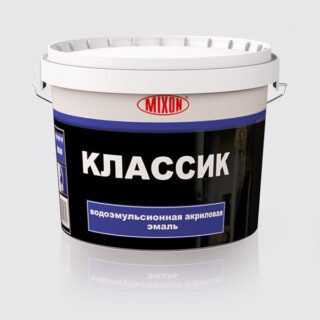
There are many nuances of using compounds to paint a wooden fence and pre-treat the surface. For example, impregnations can be ready-to-use or diluted. Composite formulations are mixed before use.
Dyes differ in color, initial raw material, functional purpose. One-component means perform one type of protection, and combined ones protect the tree from destruction in a complex way.
Water based paint
The material is classified as water-dispersible compositions. The emulsion is obtained by mixing pigments, water, crushed polymers. The particles are suspended and do not dissolve in the mixture. It is easy to combine white water-based paint with dyes to obtain the required color.
Properties depend on the type of binder. Simple formulations are washed off with soapy water, and on the basis of PVA they are characterized by low resistance to moisture. Compounds with acrylic polymers and latex can be used to paint the fence, since the coatings do not deteriorate from moisture.
Drying oil (oil)
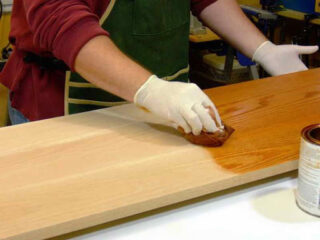
The tool is a film-forming substance based on alkyd mastics or oils. Drying oil is used for pretreatment of wood, dilution of pentaphthalic and oil paints. The composition dries up and a protective film forms on the surface.
Types of drying oils:
- oxol - a combination of natural oils with desiccants;
- natural;
- alkyd;
- compositional.
Linseed oil is often used as a primer before painting in order to reduce the consumption of the main asset.
Alkyd coatings
A translucent film with water-repellent qualities is obtained on the surface of the tree. The material dries quickly, with little penetration into the depth. This quality leads to reduced adhesion and reduced operating time.
Well suited for outdoor use as it resists moisture. The paint has increased frost resistance, withstands temperatures in the range of -30 - + 50 ° С. The layer does not deteriorate from ultraviolet rays and does not fade over time.
Coating the fence with varnish
Varnishing is used to simultaneously protect the fence from destruction, to preserve the natural pattern and color of the natural material. Varnishes form a durable film that protects the fence from the action of rain moisture, bugs and ultraviolet radiation.
There are compositions with increased resistance to wear, with fast hardening, odorless. If the fence is in a fire risk zone, heat-resistant mixtures are used. They produce varnishes ready for use or requiring dilution before work.
Antiseptic paints
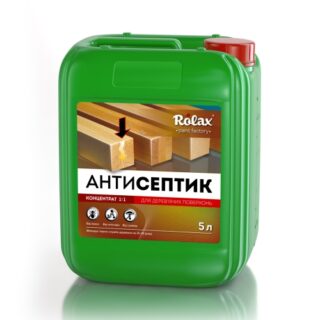
The microbial protectant is sold as a stand-alone substance or added to varnishes and paints. The antiseptic prolongs the life of the products, it is recommended for outdoor use.
The product prevents pests from entering the fibers, blocks the spread of mold spores and the appearance of rotten areas. There are oil-based, water-soluble options for protection, impregnation against fire. Combined compounds protect wooden fences comprehensively.
Compositions that are prepared independently
Often, commonly available preparations are used in the form of pre-impregnations, for example, hot bitumen or copper sulfate from pests and fungi. Soda water or a vinegar solution will help fight mold and rot.
There are complex compositions:
- rye flour or wheat flour - 1.1 kg;
- salt - 0.5 kg;
- iron vitriol - 0.5 kg;
- natural drying oil - 0.5 l;
- red iron as a dye.
Such funds will protect the fence from negative atmospheric influences for a long time and preserve the properties of wood without changing.
Primer before painting
Attention is paid to the primer, since processing is an important stage for adhesion (adhesion) of the paint layer to the wood surface. Liquid formulations are applied under paint or varnish. Manufacturers add substances to the soil that form a stable film on the plane and harden in numerous pores and between the fibers.
According to the depth of penetration and composition, the soils are divided into adhesives based on alkyd substances and leveling mixtures using acrylates.
Fence Painting Tools
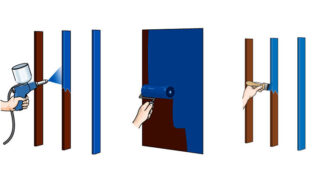
Paint applicators are classified according to application speed, paint consumption and layer formation efficiency.
Apply tools:
- rollers;
- brushes;
- spray guns.
To work with the first two types, you need a cuvette with a convex surface for squeezing out the paint.
Roller
The device consists of a metal handle with a bracket on which a replaceable roller is put on. The nozzle is represented by a plastic body (rust appears from the metal) in the form of a pipe and a covering layer (fur coat). There are straight and angled bolsters.
By size, they are divided into types:
- small - from 5 to 10 cm;
- medium - 10 - 15 cm (excellent dimensions for painting a fence and gate);
- large - 18 - 25 cm (for the facade).
The outer diameter of the rollers is produced in the range of 15 - 70 cm, and the inner size of the section must match the diameter of the bracket (6, 8, 10 mm).
Brush
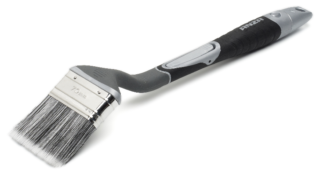
A common painting tool is used to apply various paints, but there are varieties depending on the type of work and the coating material.
Separating brushes:
- natural hair does not deteriorate from the solvent, is used for concrete, wood;
- artificial bristle - used mainly for water-soluble compositions for wood, metal, slate.
Flat and round brushes are used to paint fences on both sides, radiator (and curved handle) varieties are designed to paint fences and gates in hard-to-reach areas.
Spray gun
An electric tool is used if you need to process a long fence. Aerosol spraying gives an even and high-quality layer. The paint and varnish material is evenly distributed, while the layer is thin.
For a reliable coating, 2-3 times of application is enough. They use a spray gun for various paints, it is not necessary to specially select a composition for this, but some models have limitations for working with water-based paints.
Wooden fence painting process
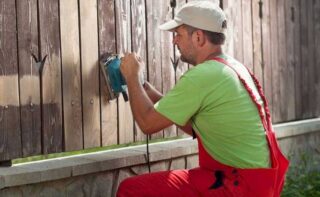
The fence tree is used in extreme outdoor conditions, the structure is open, therefore impregnations and paints and varnishes are applied carefully, without gaps.
Stages of work:
- cleaning old paint;
- surface grinding;
- application of impregnating mixtures;
- re-grinding;
- varnishing or painting.
Choose materials that are designed for wood processing.
Sawed boards have high porosity, they are treated with an antiseptic. Sliced materials have a smooth surface, but the pores are clogged with resins, alkyd primers are not suitable, acrylics are required. The sanded material is characterized by open pores and readiness for painting.
Features of painting an old fence
Old wood was treated with antiseptics and primers before painting, but over time the impregnation lost its properties, they need to be renewed. There is paint on the boards, which is cleaned off with washes. Sometimes a blowtorch is used to remove peeling films.
After using the lamp, the color of the wood darkens, the varnishing will only emphasize the blackness. It is better to take colored compounds.
How to paint a wooden fence correctly
They begin work from one end of the fence, gradually move as they paint over the area.It is wrong to paint the outer and inner sides right away, at first they cover the surface of the boards from the street as much as possible, capturing the side edges of the boards.
After that, they go to the inside of the fence and apply the compositions there, trying to capture the unpainted areas.
Features of applying varnish
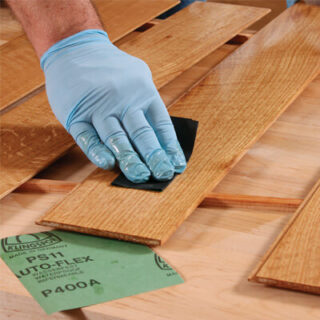
The first layer of varnish lifts the grain of the wood, so an intermediate sanding is required to get the surface ready for the second application. After finishing, the tree is wiped with a damp cloth to remove dust.
The second coat is applied with the tool of choice, but for flat areas it is better to use a roller to avoid getting streaks from the brush on the surface. Before the third layer, the surface is no longer sanded.
Oil impregnation of wood
The oil protects the wood from the action of water, the treated boards dry out less in the heat, almost do not swell in the rainy season. Natural oils belong to the group of environmentally friendly materials, but they are expensive, therefore they are almost never used in external impregnation.
Combined compositions are used for fences. Before oil treatment, a solvent is applied to the wood. Drying oil can be diluted with kerosene before impregnation for better penetration.








